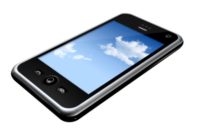 From the National Institute for Occupational Safety and Health (NIOSH):
From the National Institute for Occupational Safety and Health (NIOSH):
As of June 2013, 60% of all mobile subscribers use smartphones—that’s more than 140 million devices. Apple iOS and Google Android platforms account for 93% of those devices [Nielsen, 2013]. Smartphone developers now offer many sound measurement applications (apps) using the devices’ built-in microphone (or through an external microphone for more sophisticated applications). The use of smartphone sound measurement apps can have a tremendous and far-reaching impact in the areas of noise research and noise control in the workplace as every smartphone can be potentially turned into a dosimeter or a sound level meter [Maisonneuve et al., 2010; Williams and Sukara, 2013]. However, in order for smartphone apps to gain acceptance in the occupational environment, the apps must meet certain minimal criteria for functionality, accuracy, and relevancy to the users in general and the worker in particular.
NIOSH noise researchers received numerous requests from stakeholders, safety professionals, and the public to address the accuracy of the many sound measurement applications available for smartphones and whether they can be relied upon to provide an accurate assessment of the ambient environment. As a result, we conducted a pilot study to select and characterize the functionality and accuracy of these apps as an initial step in a broader effort to determine whether these apps can be relied on to conduct participatory noise monitoring studies in the workplace [Kardous and Shaw, 2014]. The resulting paper, Evaluation of smartphone sound measurement application, was published in the Journal of the Acoustical Society of America.
We selected and acquired a representative sample of the popular smartphones and tablets on the market as of June 2013. Smartphone apps were selected based on...Click here to read the rest of the post.








